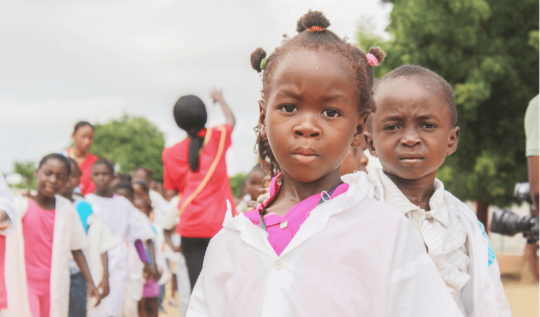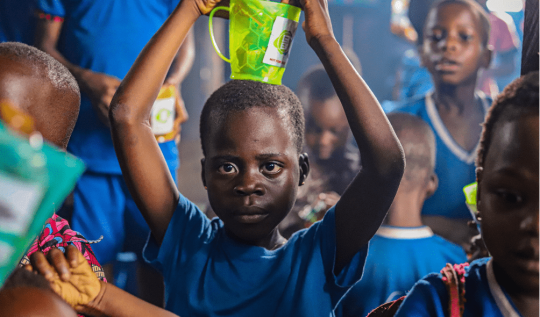
Kenyan education sector improving – World Bank report
Despite disruptions caused by the Covid-19 pandemic, the Kenyan education sector has improved significantly, according to a World Bank report.
Covid-19 resulted in learning losses and exacerbated educational inequalities.
According to the report, the closure of 30,000 primary and secondary schools in Kenya in 2020 affect approximately 17 million students and over 320,000 teachers.
Efforts to provide remote learning revealed a significant digital divide, with more than half of students unable to participate, owing to a lack of devices, electricity, and internet connectivity.
The report states that prior to the pandemic, the government embarked on ambitious reforms aimed at improving educational quality through a variety of means, but these were thwarted.
They include the competency-based curriculum (CBC), professional teacher development reform, textbook policy, and local management practices.
Kenya is now the top education performer in Eastern and Southern Africa as a result of these factors.
According to the World Bank, the government faces the challenge of ensuring that the pandemic has no long-term impact on education.
The remaining medium-term challenges must also be addressed.
Increasing enrollment in post-primary education, improving learning outcomes, and reducing deep inequalities are key structural challenges.
“As Kenya already spends a comparatively high share of resources on education, meeting these challenges will require resource allocations to remain adequate,” reads the report.
According to the World Bank, providing adequate resources will be critical to maintaining and accelerating sector improvements.
There will be a need for equitable resource allocation where it is most needed, improved local management, and additional support for all regions.
The report says, Kenya can build on the strong foundations of its education system by continuing to improve access to and the quality of education, equipping it to be a driver of growth toward becoming an upper middle-income country and reducing inequalities.
Enrollment in primary school is nearly universal but drops precipitously when students progress to secondary school.
At least 14% of students who complete Standard 8 do not enroll in Form 1, and approximately 40% of students who begin Grade 1 do not finish Form 4.
Promotion rates between grades 7 and 8 also fell dramatically.
Forms 3 and 4 correspond to national exams that determine progression from primary to secondary and secondary to upper education levels.

Kenyan Education Sector Improving – World Bank Report
According to the report, while learning has improved, the proportion of students achieving minimum performance levels remains low, declining sharply after Grade 3.
It goes on to say that the National Assessment System for Monitoring Learner Achievement (NASMLA) evaluates students in Grades 3 and 7, whereas the Monitoring Learner Achievement (MLA) evaluates students in Form 2.
In Grade 3, approximately 68%, 53%, and 59% of students achieved the 50% benchmark in the Kiswahili, English, and Mathematics tests, respectively.
As students progress through the system, the proportion of those who achieve at least a 50% proficiency in the subjects tested decreases significantly.
For example, only 29% of Grade 7 students and 6% of Form 2 students achieve minimum competency levels in mathematics.
“There are very large regional inequalities in all education outcomes, with very low outcomes concentrated in a few counties in the north and northeast of the country, in arid and semi-arid areas,” it states.
Similarly, the report shows that the Expected Years of Schooling (EYS) range from nearly 14 years in Nyeri to 6.5 years in Garissa, with most counties exceeding 12 EYS, implying that an average student in those counties will complete secondary education.
Regional disparities
The report also highlighted concerning reading learning outcomes, revealing that less than half of students nationwide achieve the minimum high order proficiency level in reading. In 21 of the 47 counties, the percentage is less than one-third.
Because reading and comprehension are foundational skills required to absorb any curriculum, the report states that very low reading outcomes pose a significant barrier to students progressing adequately through the system.
This reading deficiency must be addressed.
According to the World Bank report, student performance varies across schools within counties.
Students within the same schools account for more than half of the difference in learning performance, which has important policy implications.
The report states that targeting specific counties or schools for support is simple, but addressing inequalities requires different pedagogical levels of learning.
While gender differences in primary education have narrowed in recent years, girls continue to drop out of school earlier than boys.
Gender disparities in school enrollment are concentrated in the most educationally disadvantaged counties, primarily in the North-East and Coastal regions.
Poverty and high school fees, poor infrastructure and long distances to schools, insecure learning environments, and increased exposure to violence and sexual harassment or abuse are all barriers to girls’ school participation and retention.
“Early pregnancy contributes to girls’ higher secondary dropout rates.”
Poverty and educational attainment are among the reasons (33 percent of girls 15 to 19 years old with no education have begun childbearing), while teenagers from the poorest households (26%) are more likely to have begun childbearing than those from the wealthiest (10%), according to the report.
Gender differences in learning outcomes paint a mixed picture, with girls outperforming boys in language but falling short in Mathematics and Science at all levels of education.
According to the report, girls outperform boys in all subjects in third grade.
Boys outperform girls in Mathematics and Science in higher grades, while girls continue to outperform boys in English and Kiswahili.
As students progress through the system, the gender gap in Mathematics and Science grows, indicating that early action to
close these gaps is critical to addressing future gender inequities.

Kenyan Education Sector Improving – World Bank Report
Returns on investment for Science, Technology, Engineering, and Math (STEM) programs are also higher, so these differences can lead to life-long wage disparities.
According to the report, minimum requirement satisfaction increased by 6% in numeracy, 16% in English, and 6% in Kiswahili.
According to the report, Kenya is a regional leader in reading.
Although numeracy fell in 2018 in comparison to neighboring countries, early grade mathematics assessments improved from 71% in 2016 to 80% in secondary schools between 2015 and 2021.
Final secondary examinations (KCSE) performance increased from 11% in 2017 to 18% last year.
According to the report, these gains are the result of continued high educational spending.
Expenditure has reached international benchmarks, both as a percentage of total government expenditure (TGE) and as a percentage of GDP (GDP).
Except for South Africa, TGE as a share of GDP reached 5.3 percent in 2018, which was higher than the average for lower and upper middle-income countries.
Education’s share of the government budget has also increased, reaching 19% in 2020.
Education spending per capita is also relatively high in comparison to other countries in the region, which the report emphasizes is an important factor in ensuring quality education.
The report also highlights key messages from the new World Bank Public Expenditure Review (PER) in basic education, as well as Kenya’s impressive achievements, challenges, and future directions.
According to the report, Kenya’s real GDP is expected to grow by 5.5 percent this year and 5.2 percent on average next year, reversing a remarkable recovery from the pandemic’s worst economic effects last year.
ALSO READ:
According to the World Bank, education will require additional resources from economic growth even as the country recovers from the pandemic.
While Kenya performs well in terms of income, the report suggests that it should strive to improve both access and, especially, quality of education in order to improve the Learning Adjusted Years of Education (LAYS) and the World Bank’s Human Capital Index (HCI), which measures a country’s level of human capital development.
Kenyan education sector improving – World Bank report

